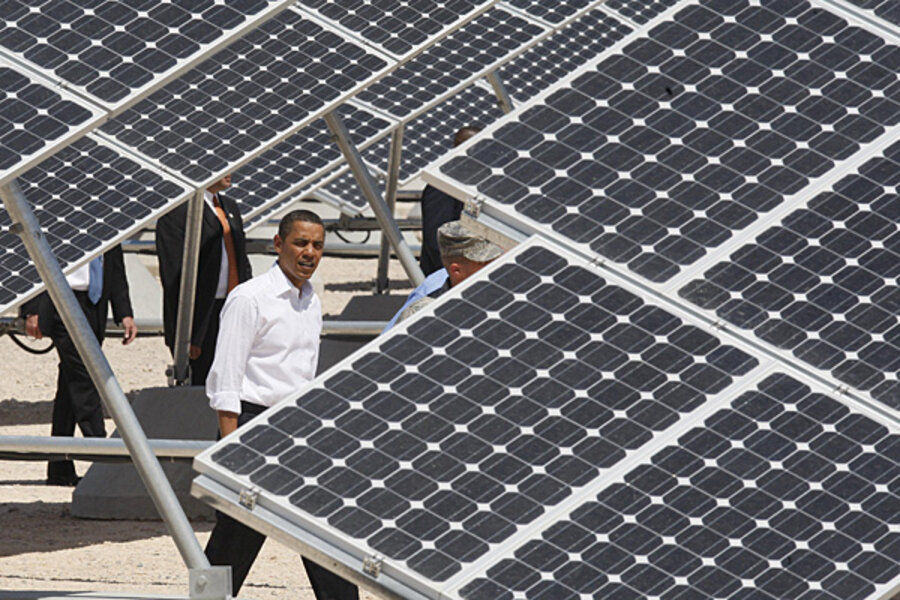Obama wants to clean up Washington ... energy
Loading...
President Obama wants to see more clean energy in Washington.
The president boosted targets for renewable energy use by the Federal Government in a memo issued Thursday to civilian and military agencies. Frustrated by a gridlocked Congress, Mr. Obama has leveraged executive powers to implement a climate change plan he outlined in June. The administration's efforts to promote renewables have found strong opposition by backers of fossil fuels, who say a transition to clean energy undermines economic growth and the stability of the electrical grid.
The latest order builds on progress in clean energy by the federal government, the country's largest energy consumer. It is part of the government's broader effort to reduce greenhouse gas emissions and reliance on foreign energy sources.
"In order to create a clean energy economy that will increase our Nation's prosperity, promote energy security, combat climate change, protect the interests of taxpayers, and safeguard the health of our environment, the Federal Government must lead by example," Obama wrote in Thursday's memo.
By fiscal year 2020, the government should rely on wind, solar, and other renewable sources to supply 20 percent of its energy, according to the White House plan. In fiscal year 2013, clean energy made up about 7 percent of the federal government's consumption.
The order also calls for enhanced energy efficiency at the federal level, echoing a bill that has been mired in Congress for more than three years. Agencies are required to install energy and water meters in their buildings and to publicly disclose energy performance data. The federal government manages 500,000 buildings, employs 1.8 million civilians, and has an annual purchasing power of more than $500 billion.
The Department of Defense (DOD) makes up the bulk of the government's energy use. In fiscal year 2012, the military spent $16.4 billion on 104 million barrels of liquid fuels to power basic training, branch training, home station training, exercises, and the full range of military operations, according to an October DOD report. More than 60 percent of that fuel was purchased outside of the US. It's why Defense is investing millions in reducing energy demand and cultivating renewable sources.
The White House did not include a cost estimation in its Thursday memo, but critics of the administration's clean-energy plan say it is too costly and too aggressive.
“We support an ‘all of the above’ energy portfolio that makes sense, but shoe-horning renewable technologies that cannot deliver the baseload electricity this country needs does no one any good and puts the American economy at risk, ” Laura Sheehan, a spokeswoman for the American Coalition for Clean Coal Electricity, the coal industry's trade association, said in a statement responding to Thursday's memo.
“Time and time again, the President and members of his Administration fail to acknowledge the multitude of economic and electric reliability consequences of supplanting renewable fuel sources with coal-fueled electricity," Ms. Sheehan added, "and now our federal government will become a model for bad policy.”








